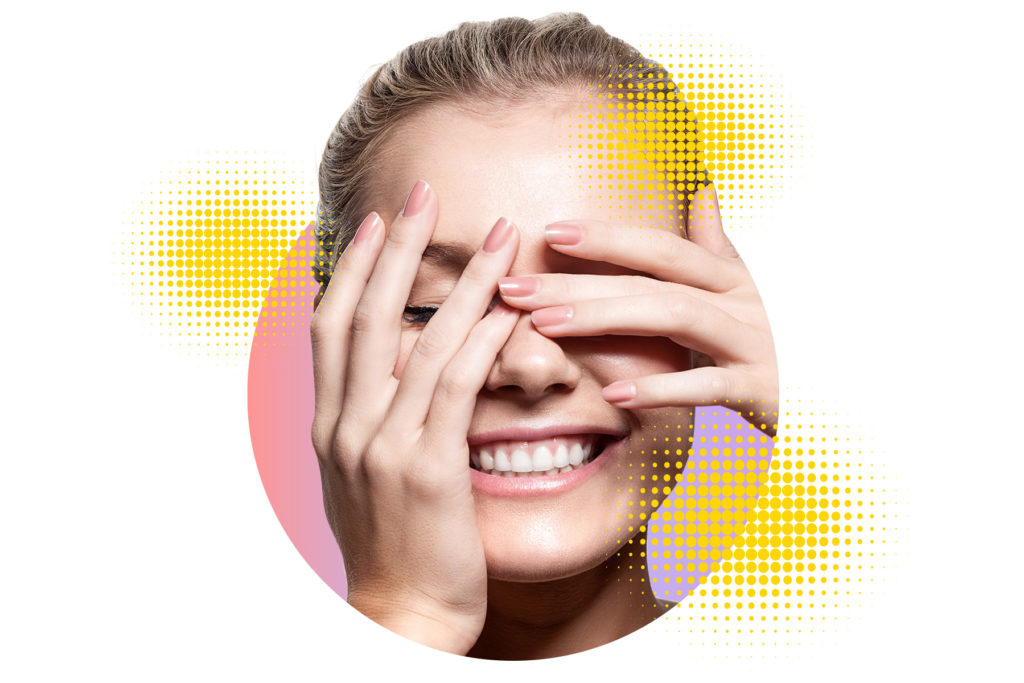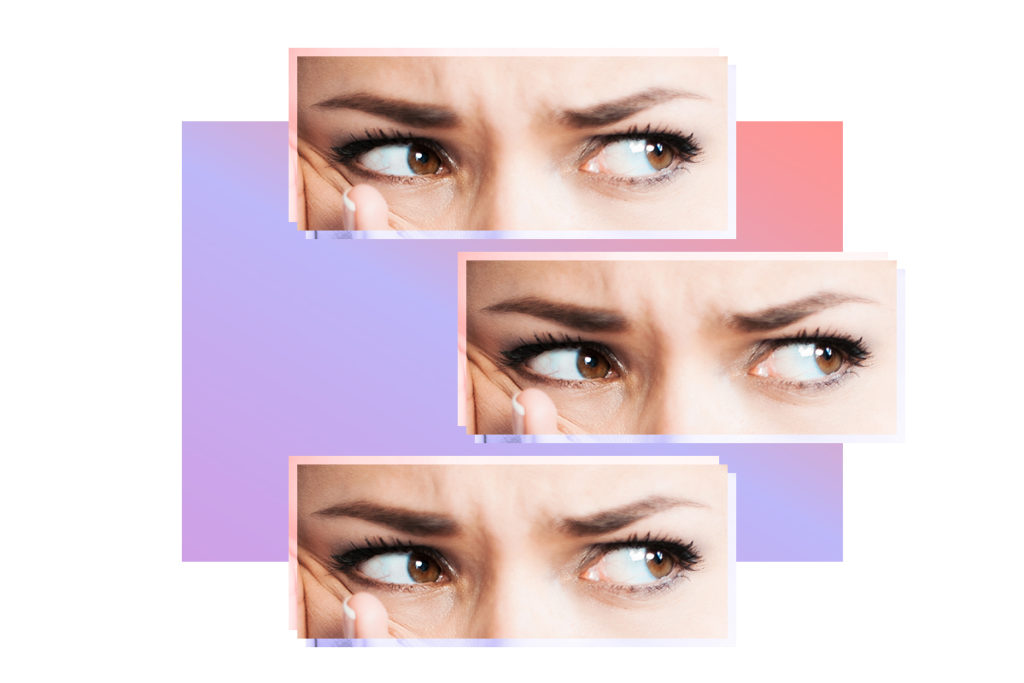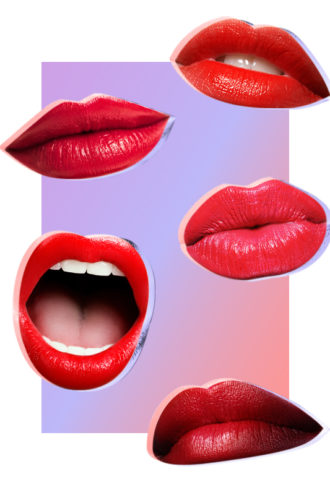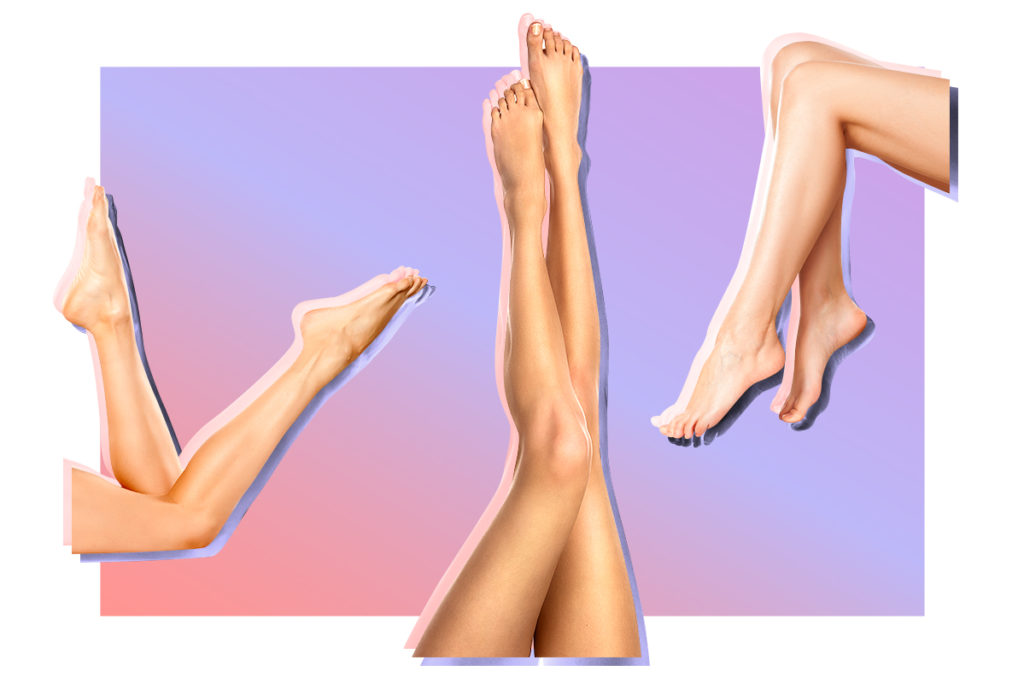Luckily, the topic turns to Botox, and filler, and skincare, and everyone is feeling particularly forthcoming today (thanks, Champagne). One woman discusses her decades-long relationship with her injector, another touts the virtues of microneedling for helping her hold out on neurotoxins, and there’s a friendly but passionate debate about preventative Botox.
Somewhere, perhaps, that luncheon is actually happening, but for most, that scenario remains a fantasy. Especially those of us in Dallas, one of the leading markets for Botox and filler, but a city where not everyone is as forthcoming about aesthetic upkeep as they would be in Los Angeles or Miami. “Dallas is just … no, not in this city,” warned one woman I’d spoken to about her Botox. “People are judgmental here. I’m just not going to walk around and talk about that stuff unless you’re a close friend.”

But what if you don’t have that close friend? As aesthetic medicine continues to advance, more people than ever are starting to seek out injections. (Neurotoxin procedures have increased 28 percent among 20 to 29-year-olds since 2010, according to the American Society of Plastic Surgeons.) And in such an unregulated industry, it’s important to be educated, and seek out the best of the best.
So I went about creating my own digital version of that lovely Dallas luncheon. I spoke with a variety of influential local women who care deeply about the maintenance of their skin, as well as the doctors and dermatologists they passionately vouched for.
And if neurotoxins and fillers aren’t for you, these forthcoming women also happily shared their thoughts on skincare, non-toxic beauty, and the facials they’re addicted to. The intention with this guide isn’t to convince anyone to get Botox, but to hopefully lead you in the right direction should you be interested. And if you are, you’re lucky. Dallas knows how to do injectables right.
Now let’s talk about it.
 It’s not too hard to figure out where the stigma around Botox stems from. Its name alone, Botulinum toxin, is off-putting. Not to mention the unnerving idea of partially paralyzing a muscle. Plus, the field of aesthetic medicine is incredibly unregulated (insurance companies will likely never cover crow’s feet). Botox can often be injected by people with little experience. (Pro tip: If you ever see a Groupon for it, the person you’re seeing is likely still in training.)
It’s not too hard to figure out where the stigma around Botox stems from. Its name alone, Botulinum toxin, is off-putting. Not to mention the unnerving idea of partially paralyzing a muscle. Plus, the field of aesthetic medicine is incredibly unregulated (insurance companies will likely never cover crow’s feet). Botox can often be injected by people with little experience. (Pro tip: If you ever see a Groupon for it, the person you’re seeing is likely still in training.)In 2002, the FDA approved Botox for cosmetic use, after patients who received injections for eye twitches were pleasantly surprised to find the lines between their eyebrows disappeared right along with their spasms. Today, Botulinum toxin (which includes Botox, Dysport, and Xeomin) is part of the billion dollar industry of aesthetics, and is by far the most commonly used injectable. “Botox opened the door to everything,” says Dr. Lori Stetler, of the Dallas Center for Dermatology and Aesthetics.
In the right hands, Botox smooths wrinkles and can even offer a slight eyebrow lift (though you should certainly still be able to move them). But in the wrong hands, where Botox can unfortunately land, you may end up looking, well, a little weird. “If it’s put in the wrong place, people can look angry, or have some puffiness under their brows,” says Beverly Breshears, who’s been practicing aesthetic medicine at Somatique in Greenway Parks for 23 years. “They just look different.”
But it’s all relatively new, and the long term effects (though they shouldn’t be negative) are still something of an unknown and will likely vary from person to person. Some older women who’ve been using Botox for years told me that the muscles they targeted with neurotoxins have simply stopped working, and they now only get the injection once a year.

And just as new products are being introduced to challenge Botox (hey, Jeuveau), new cosmetic uses for neurotoxins continue to be discovered. Estheticians and friends Riley Bland and Brittany Ricketts, who just opened House of Preservation Med Spa, designed their treatment menu to reflect that. “We’ve come up with little names to help people know all the things that Botox can do besides getting rid of wrinkles,” says Ricketts. “For example, ‘Gummy Smile.’ If you show too much gum when you smile, we can add a couple of units of Botox to the area above the lip.” Other options include “Baby Botox” (a light sprinkling of the neurotoxin to ease new users in) and “Sayonara Sweat Stains.”
As to who you should see for Botox, it’s ultimately about experience, but preferably a physician is either administering it or is able to supervise. (Bland and Ricketts enlisted a plastic surgeon to be House of Preservation’s medical director.)
“There’s been a lot of change just within lasers, devices, and products,” says Dr. Stetler. “There’s so much you can do to keep looking good that doesn’t involve going under a knife.”
“In New York, they have a certain market and a certain look. In California they have a certain look. But in Texas, we really have a much more natural appearance.” – Dr. Jeffrey Adelglass.
Botox vs. Dysport
Where there’s Botox (made by pharmaceutical company Allergan), you’ll most likely find Dysport (made by Medicis Pharmaceutical). (You may also find Xeomin, but we’ll touch on that in a bit.) To pit them against each other, though, isn’t entirely fair. It’s true that Botox is about twice as expensive, but you typically need twice as much Dysport. It ends up being a wash. What we should compare is the different effects the two neurotoxins have and which uses they would each make more sense for.
The full effects of Botox typically take longer (about five to seven days) than Dysport (which has an onset period of about two to three days). Botox also doesn’t spread in the way that Dysport does, which can be a good or a bad thing, depending on what you’re looking for.
“In my forehead, I want to know exactly where the injection is going,” says Ricketts. “Somewhere like the masseter, which is treated for TMJ in the jaw, can afford a bit more spread because it’s a larger area.”
Because units of Dysport are less effective individually, they can also be a great option for people looking to test out neurotoxins. “I have friends that are models at Kim Dawson, and their expression is of the utmost importance,” says Ricketts. “I’ll tell them to try Dysport and see how they like that. If they do, then they can give Botox a try.”
Xeomin, made by healthcare company Merz and approved by the FDA in 2011, is one of the newest cosmetic neurotoxins to hit the market. “I actually use Xeomin in the underarm region for sweating, because you get a much larger diffusion of the product,” says Breshears.
“I’m not against fillers or Botox. I’m very pro-choice when it comes to a woman’s body. I haven’t gotten it yet, but there will be a day when I want it. There are so many women who have it done and it’s so good that you can’t tell, and I wish that people would talk about it.” – Alika Ray, model.
A Botox Warning Sign
Botox is priced either by unit or area (forehead, crow’s feet, etc.), and the standard price per unit in Dallas is typically $12. (Ideally, touch ups should be of no charge.) If you ever see anything below $10, it’s fair to be suspicious. “The cost for a company to buy Botox is so high that to market anything below $10 just doesn’t make sense from a business perspective,” says Ricketts.
“That might be a situation where it’s being watered down,” adds Dr. Stetler. “You can always ask to see the syringe or the bottle of Botox with the hologram on it so you know that you’re getting the real thing.”
“Preventative Botox” is Real, but is it Necessary?
 Preventative Botox is a legitimate concept, but it’s a new one. “I rarely had someone in their twenties back in 2004,” says Dr. Lynley McAnalley of Highland Park Aesthetic Medicine. “I attribute it to the Kardashian phenomenon and Instagram.”
Preventative Botox is a legitimate concept, but it’s a new one. “I rarely had someone in their twenties back in 2004,” says Dr. Lynley McAnalley of Highland Park Aesthetic Medicine. “I attribute it to the Kardashian phenomenon and Instagram.”If injected early enough, neurotoxins can prevent wrinkles from ever setting in, but paralyzing the muscle that early in life may have some consequences down the line. If you do decide to go the prevention route, it’s best to keep things conservative, which the right injector should be cognizant of.
Everyone I spoke to had an opinion about preventative Botox. Here are two of my favorites arguments for and against.
Beverly Breshears of Somatique
I think women should embrace their youth for as long as they can, and hold off on fixing issues that are yet to exist. Save your money, buy pretty dresses, and do things. Or put money in a savings account so you can buy Botox when the time comes, which is when the wrinkles start remaining even when your face isn’t animated. If you make that frown, and then release it and the lines are still there, you need to start doing Botox so they don’t get worse.
There are some girls at 25-years-old who have very deep lines that are just part of their origin. But the key is to restore, and then maintain that restoration.
Rylie Bland of House of Preservation
I started getting Botox around 25-years-old, because the whole goal for me and Brittany [her House of Preservation co-founder] is prevention. By hitting the pause button, you’re preventing those lines from deepening and getting worse.
Your skin is like a piece of paper. If you fold it and smooth it out, which is essentially what Botox is doing, you’re still going to have faint lines. But If you’re someone who would like some lines and find that adds character, then we support that. And that’s a personal decision. For me, I don’t want a crease on my face.
Ultimately, it comes down to your philosophy on aging. Personally, I’m curious to see what happens to the Lala Kents of the world (apologies if you don’t watch Vanderpump Rules) who began getting Botox even earlier than 25. What does it look like at 60 when you’ve never let even a hint of a wrinkle sink in? It could look great! It could look weird as hell. But then again, if my beloved Lala feels confident in her skin, that’s certainly good enough for me.
Men Get Botox Too
If you’ve ever picked up a pamphlet for Botox, or Juvederm, or practically any injectable, you’re almost guaranteed to see a stock image of an attractive woman. (She’s probably gently touching her face for no discernable reason.) But there is an exception: Kybella. The relatively new FDA-approved injectable eliminates fat cells under the chin and is used on all genders, but men seem to have taken to it.
“Sometimes [my husband] Travis would complain about me getting Botox. One day I told him, ‘Hey, you should really think about getting Botox too.’ The moment he felt it was necessary for him to get Botox, is the moment he never complained.” – Stephanie Hollman, of The Real Housewives of Dallas, on her podcast, Weekly Dose of BS.
“I do think I have more male Kybella patients than female,” says Dr. Lynley McAnalley of Highland Park Aesthetic Medicine. “But men do a little bit of everything in my office.”
 McAnalley’s male clientele (typically husbands of her patients) has grown to comprise about 10 percent of her business. “They see their wives looking better, and not looking weird, and think, I want some of that too,” says McAnnalley. “And I love that, because these macho men aren’t used to being pampered like we are.”
McAnalley’s male clientele (typically husbands of her patients) has grown to comprise about 10 percent of her business. “They see their wives looking better, and not looking weird, and think, I want some of that too,” says McAnnalley. “And I love that, because these macho men aren’t used to being pampered like we are.”Men now make up about 10 percent of injectable consumers (according to a 2017 study by the American Society for Aesthetic Plastic Surgery) but typically stick with Botox, a trend that’s being called—I’m so sorry to tell you—Brotox. “We don’t like to call it that,” laughs Ricketts. “The technique for injecting a man is completely different. They don’t want the more defined eyebrow arch women typically get Botox for.”
But it’s not just injectables men are looking into. “When I started getting laser hair removal, my husband started asking a lot of questions,” says TV host and lifestyle blogger Hilary Kennedy. “Men already have to shave their faces so often, and I think he was just like, ‘Yeah, it would be nice to have one less thing to do, like shaving your knuckles’.”
 I blame TV shows like Botched and celebrities like Lisa Rinna for this, but I once had a pretty negative outlook on fillers. I associated them with impossible cheekbones and even more impossible lips, and fillers certainly are the perpetrators behind those cosmetic crimes. But their contouring effect can be beautiful when done thoughtfully and conservatively. “Filler, if done in the right places and in the right manner, can really turn back the clock,” says Dr. McAnalley. “With a facelift, there’s this sort of unidirectional pull toward the back of your ear, and it can immediately distort your face, but with fillers, you can really mimic you.”
I blame TV shows like Botched and celebrities like Lisa Rinna for this, but I once had a pretty negative outlook on fillers. I associated them with impossible cheekbones and even more impossible lips, and fillers certainly are the perpetrators behind those cosmetic crimes. But their contouring effect can be beautiful when done thoughtfully and conservatively. “Filler, if done in the right places and in the right manner, can really turn back the clock,” says Dr. McAnalley. “With a facelift, there’s this sort of unidirectional pull toward the back of your ear, and it can immediately distort your face, but with fillers, you can really mimic you.”First, a brief background on fillers, which have had quite the evolution. “Filler first came out back in the early ’60s. It was bovine collagen taken from cows, and lot of people were allergic to it,” says Breshears, who, I must mention, sounds exactly like Dolly Parton—it’s wonderful. “It was also very expensive. It was pretty darn good filler, but it only lasted about two weeks or a month. A lot of people spent a lot of money.”

Next, there was human collagen, which was taken from cadavers. “Again, very, very expensive, and didn’t last any longer,” says Breshears. “But it was beautiful. Models and movie stars used it a lot back in the day. Then came hyaluronic acid fillers, which is something the body makes.”
Juvederm and Restylane are both hyaluronic acids (Restylane was the first to be FDA-approved in 2003), the most popular kind of dermal fillers on the market. The gel-like substance fills in lost volume by encouraging the cell to hold more water. They last anywhere from six to 12 months before they’re naturally absorbed by the body, and can easily be dissolved. And while not inexpensive (the average price is $540 to $1,680, according to the American Board of Cosmetic Surgery), fillers are now accessible to far more than just movie stars and models.
“People on the fence about getting their lips done, I’m like, it’s not like highlighting your hair. You can just get a simple injection that dissolves it, and in 24 hours, you’re back to how you were before.” – Brittany Ricketts, co-founder of the blog House of Preservation.
“I think aesthetic medicine has come so far,” says Tanya Foster, a Park Cities mom and over-40 fashion blogger. “I heard a doctor once on the radio say that in the next five to 10 years the only thing that will really need a knife is a nose job and a full face lift — the rest can be done with aesthetic medicine.”
Find Your Filler
“Certain fillers are better for certain areas of the face,” says Dr. McAnalley. “There’s sort of a finesse to it with the different options, and with experience you know which fillers are appropriate for a certain area of the face and for a particular patient.” For example, a more viscous filler like Juvaderm Voluma would be best in the cheek area and the temples, where filler lays deeper in the skin. Thinner spots, such as lips or the area around the mouth, would look best with something less viscous.
“As the field has developed over the past 15-or-so years, there’s more particularity to it that makes the result much better,” says McAnalley.
Visual Aid
 For all its pitfalls, Instagram has proven to be an excellent medium for visual artists. And why shouldn’t injectors who are perfecting their craft consider themselves artists? One local example: Courtney Dunavant, a physician’s assistant who documents the before-and-after photos of her Juvederm and Restylane injections in tear troughs, lips, chins, and beyond. (There’s even some liquid rhinoplasty for anyone interested.) The deeply scrollable results are subtle, not shocking, and a great visual source for the various wonders dermal fillers can work.
For all its pitfalls, Instagram has proven to be an excellent medium for visual artists. And why shouldn’t injectors who are perfecting their craft consider themselves artists? One local example: Courtney Dunavant, a physician’s assistant who documents the before-and-after photos of her Juvederm and Restylane injections in tear troughs, lips, chins, and beyond. (There’s even some liquid rhinoplasty for anyone interested.) The deeply scrollable results are subtle, not shocking, and a great visual source for the various wonders dermal fillers can work.Dunavant has worked at med spas such as It’s a Secret and ZO Skin Centre. She’s currently the clinical manager at House of Preservation.
“The quality of the machines and the devices, they’re all getting better and better. These are exciting times to be beautiful.” – Dr. Barbara Adelglass.
The Filler Artist
When I first began asking around for the who’s-who of Botox and filler injectors, Dr. Lynley McAnalley came up more than once. The board- certified doctor left family medicine to specialize in aesthetics in 2004, just two years after Botox was approved for cosmetic use. Her private practice is focused exclusively on injectables, and she performs all of the procedures herself. And yet, everyone I spoke to had the same selling point: Just look at her.
“She’s just one of those people that you see a photo of and you’re like, I’ll do whatever you’re doing,” says Foster, who’s been seeing McAnalley for over 20 years. “She’s a perfectionist with the needle.”
 McAnalley is open about doing both filler and Botox (“You have to practice what you preach,” she says), and does all her own injections. “I practiced family and emergency medicine for 10 years when a doctor called me in 2003 and said, ‘Hey, there’s this new product on the market, Botox, and I want to start a clinic where we just inject Botox and Restylane’.” She staffed the clinic in North Dallas and fell in love. “I liked the artistic nature of it. I liked that your patients are healthy and happy and just want to look and feel a little better about themselves,” says McAnalley.
McAnalley is open about doing both filler and Botox (“You have to practice what you preach,” she says), and does all her own injections. “I practiced family and emergency medicine for 10 years when a doctor called me in 2003 and said, ‘Hey, there’s this new product on the market, Botox, and I want to start a clinic where we just inject Botox and Restylane’.” She staffed the clinic in North Dallas and fell in love. “I liked the artistic nature of it. I liked that your patients are healthy and happy and just want to look and feel a little better about themselves,” says McAnalley.Botox is its own thing, of course, but filler, according to McAnalley, is the first step for maintaining a youthful look. “People usually walk in the door because they don’t look like themselves anymore, and that’s typically because of volume lost, not because of wrinkles,” says McAnalley. “What’s fun to me about it is, when they come in, I can visualize what they used to look like, where the softness was. They’ll pull out their phone to show me what they looked like, but in just once glance, I already know.”

Botox and fillers can be miracle workers, but they’re not cure-alls. A good skincare routine is one of the most important things you can invest in. Here are a few Dallasites’ favorite lines.
“There are so many great products out there. At this point there’s so much you can do at home.” – Heidi Dillon
Going Clean
Non-toxic beauty is now everywhere in Dallas, and can be just as effective as the mainstream lines.
~ “I call Credo my crack dealers. I love their approach to skincare, which is really treating your skin like a microbiome,” says model Alika Ray. “Unfortunately, I started getting cystic acne in my late 30s, but I found this skincare line at Credo, Marie Veronique, that has this really great intensive repair cream that’s great for breakouts. My skin is loving it.”
~ “I’m big on buying from a derm’s office, but when I do go over-the-counter, I love The Greenway Shop,” says Meredith Land, an anchor at NBC 5. “I do a Kypris Cerulean mask.”
(At-Home) Tools of the Trade
Discovering at-home versions if your favorite facials isn’t just self-care, it can be an investment in your skin. Here, we share a few locally-approved tools all beauty junkies should consider adding to their vanity.
“It’s ridiculous how many things I have charging on my vanity right now,” says Hilary Kennedy. “It looks like an atom splitting lab.”
Two of the most popular at-home tools came from the minds of Dallas-based beauty innovators. Read on to discover their lifting and plumping powers.
Joanna Czech

You can’t talk about skincare in Dallas without touching down on Joanna Czech. The celebrity esthetician (check out the hashtag #Czeched on Instagram to see her work on some familiar faces) is known for finishing off treatments with a signature facial massage, and recently debuted a tool that allows ardent followers to perform their own at home.
The futuristic-looking facial massager can be used to help product absorb (similar to a jade roller), but it can also manipulate our faces’ 43 muscles just as Czech does in her airy, Victory Park studio. “Massage is by far the most important step in an effective non-invasive skincare regimen. Massaging the skin speeds up circulation, bringing more oxygen to the tissue, resulting in brighter, healthier skin,” says Czech on her website. “It can also change the shape of the face; lifting the brows, the jawline and emphasizing the cheekbones.”
Jamie O’Banion
Almost every woman I spoke to raved about microneedling, a Gwyneth Paltrow-promoted facial that includes stamping your skin with ultra-fine needles to stimulate collagen and promote that glowy lit-from-within look (kind of like aerating your lawn). Kameron Westcott was literally driving to Las Colinas for the SkinPen treatment when I called her to chat.
With such a fervor surrounding microneedling, it makes sense that when Dallas’ Jamie O’Banion introduced an at-home version (Beautybio’s GloPro), it would practically go viral. (Forbes believes O’Banion is well on her way to becoming one of America’s richest self-made women.) Both Westcott and NBC5 anchor Meredith Land are religious users. “I’m obsessed. I use it every morning,” says Land.
And while it may seem daunting to roll 540 stainless steel micro-needles across your face without supervision, I can personally vouch for the GloPro. Yes, the skin on my face, neck, and décolletage was red and a bit itchy for about 30 minutes after the first few uses (I’d recommend doing it at night), but then it looked fantastic.
These Facials Aren’t Fads
Laser Genesis
A non-invasive treatment targeting fine lines, acne scars, and uneven skin tone.
“I get it at Vitalize Med Spa in Plano. They told me I would need multiple treatments, and of course they always tell you that at every med spa, but I trusted them this once time. After the fifth treatment, I had so many people ask me what I’ve been doing, that it made me a believer.” – Hilary Kennedy
The SkinPen
The collagen induction therapy (aka microneedling) creates thousands of micro-injuries to address aging signs at a cellular level.
“They say you can do it once every month, but I try to do it once every three months. My skin is more sensitive. Basically, it’s giving your skin trauma so that it rebuilds collagen. It helps the texture, pore size, fine lines, and wrinkles.” – Kameron Westcott
Photofacials
A laser treatment that targets and corrects skin damage, including acne and rosacea.
“I started with chemical peels in my mid-30s, but then rolled into microdermabrasion and photofacials as the industry evolved. I had a lot of sun damage and rosacea. I held off with fillers honestly until I was in my 50s, and they weren’t nearly as advanced then.” – Heidi Dillon
BBL Photofacials
Takes photofacials a step further.
“There are two different types of photofacials. One is IPL, intensive pulse light, and the other is BBL, broadband light. We’ve tried both, and almost everyone in the industry will admit it to be true, but the BBL results cannot even be compared.” — Brittany Ricketts of House of Preservation
HydraFacial
A hydradermabrasian procedure that simultaniously cleanses, exfoliates, painlessly extracts, and hydrates.
“I’m close to Jennifer Reynolds, an aesthetician at North Texas Plastic Surgery, and she’s given me a ton of guidance and knowledge about skincare. I’m a big fan of her HydraFacials.” —Catherine Lowe
PRP Facials (platelet-rich plasma, aka the Vampire Facial)
Blood is drawn from a patient and put in a centrifuge to separate packed red blood cells from the plasma, which is then reinjected into the face.
“I’m very slow to take on something new. I don’t want to offer something if I’m not just blown away by the efficacy, but I think PRP has proven itself. It acts a bit like filler, but it’s really more of a collagen stimulator.” – Dr. Lynley McAnalley
Tanya Foster’s philosophy on Dallas facials…
“I go to a facialist to get my face cleaned, but I don’t have one facialist I swear by. I’ll go to The Joule spa, or The Crescent, or The Ritz—I kind of like to pop around. For me, I don’t want to get a facial for 50 minutes and put my makeup back on and get back to my life. It’s an indulgence, so I always tend to go to a spa for that.”
Laser Hair Removal 101

In the years shortly following Carrie Bradshaw’s accidental Brazilian wax, pubic hair was officially out. The Atlantic even went so far as to question its extinction. Today, there’s a bit more diversification on the scene, thanks to vocal celebrities and body positivity. It’s neither feminist nor some sort of submission to the patriarchy to go bare down there — it’s just a personal choice.
But let’s not beat around the bush (sorry). If you are choosing laser hair removal for any part of your body, it’s always good to come prepared. Here, Dr. Jeffrey and Barbara Adelglass of Skintastic break down the basics.
The Price
“As lasers have become more prevalent and competitive, the prices have gone down. Generally, it costs about $75 per session and goes up from there depending on the area. But there are services to match anyone’s budget. The most important thing in our department is the technology and the technician — experience counts.”
How Many Sessions Should You Do?
“You spread them out every four weeks. The average series is four to six treatments, but it just depends on hair thickness and ethnicity.”
What State Should Your Hair Be In For a Session?
“It’s good to let the hair grow out a little bit. The idea is to get that perfect amount of stubble, but not let it be long. So I wouldn’t shave on the way to see us, but a day or two prior is fine.”
Does Hair Color Count?
“True blondes and redheads do have a much tougher time with laser hair removal. Lasers target pigments, so if you don’t have much pigment in the hair, it’s very difficult to remove. We may only be able to thin in it.”
Which Means No Spray Tans…
“The lighter the contrast between the hair and the skin, the more successful the treatment. Any exposure that darkens the skin, whether it be artificial or not, is not a good idea.”
Does It Really Last Forever?
“It’s really laser hair reduction. Although it’s semi-permanent, women’s hormones change, and hair could always grow back, but it will be thinner and finer.”

Heidi Dillon’s Aesthetic Beauty Shortlist
Longtime New Yorker-turned-Dallasite Heidi Dillon has made appearances on reality shows such as The Real Housewives of Dallas and Big Rich Texas, but her passion for style and beauty (she’s an ambassador for both Net-A-Porter and Dallas-based Natura Bissē) is most likely what earned the 66-year-old more than 10,000 followers on Instagram.
“All these people are friends of mine, and the reason they’re friends of mine is because I respect them,” says Dillon. “I wouldn’t be friends with someone who was, you know, kind of quack. I won’t name names, of course, but I could tell you a lot of names.”
Dr. Farah Kahn
“She specializes in body work really, but she’s also very skilled with Botox and with filler. So she’s kind of one-stop. You can have your face injected, your boobs done, and your butt tightened, if you want to go down that road.”
Dr. Vinita Schroeder
“I’ve been going to Vinita for my allergies forever, but many years ago she got very involved in aesthetics and loves that end of the business. She trained with Dr. Dre, not the musician, but a very famous Parisian dermatologist. She goes and works with him on a regular basis to get up to speed on what they’re doing in Europe, which is usually ahead of what we’re doing here.”
Dr. Masoud Saman
“He’s in Plano but he’s opening up an office in Highland Park. His training is ENT (ear, nose, and throat), so it was a natural progression to roll into cosmetic work. He only works on the face, and does a wonderful job with injections and PHP treatments. I met him because my friend Tina Craig introduced me.”
William Moore
“He’s terrific. He has some really good estheticians at his aesthetics spa, Advanced Skin Fitness. He keeps up with all the latest technology and skin rejuvenating treatments.”
Dr. Flora Kim
“If you have acne or some skin condition, she’s the dermatologist to go to. She also does Botox and fillers. She has a particular technique doing her fillers that she’s learned from some fancy person in Europe, so she has a slightly different take on how to administer fillers.”
“Life is just a series of appointments of maintenance.” – Tanya Foster, blogger.
A Few More Dallas Recommendations…
Dr. Jordan Rihani of the Facial Plastic Surgery Institute
“He’s done a couple of friends of mine, and his work is very subtle and natural. If I get anything done, I’m going to him.” – Alika Ray
Dr. Alison Black of Las Colinas Dermatology
She helped me find the products that worked best for my skin. I actually found her through my mother-in-law, but a lot of people in Dallas know her.” – Kameron Westcott
Dr. Fiona Wright of Skin M.D. and Beyond
“It’s so important to have a dermatologist you trust. She writes a list of products I should use step-by-step.” – Meredith Land
Enlighten MD
“My sister and I are big fans of Botox as a preventative treatment for lines and wrinkles. I started getting routine Botox in my forehead in my mid-twenties. Now, I only need it two times per year because starting early has actually trained the muscles in my forehead to prevent further “damage.” Natalie, on the other hand, started a little later than me and had more resting-lines than I had to start with (which I accredit to excessive sun-exposure since she was an athlete), so she goes every three months.
She tends to be more of a naturalist, so it took some convincing to get her into the idea of Botox, but with the help of Kari Feinstein and her team at Enlighten, we managed to convince her to try it.” – Sarah Knowlton of lifestyle brand and macaron bakery We the Birds






